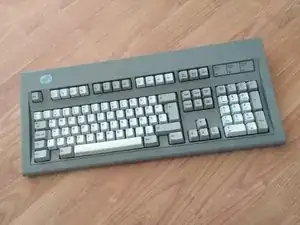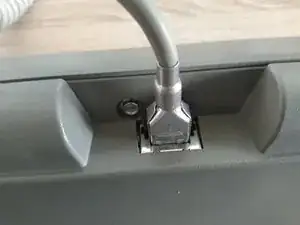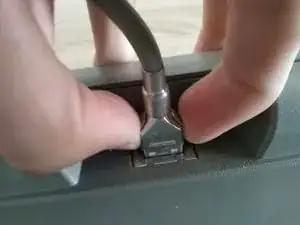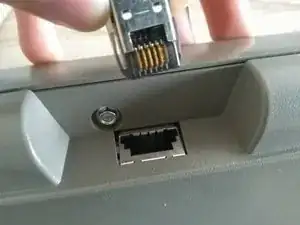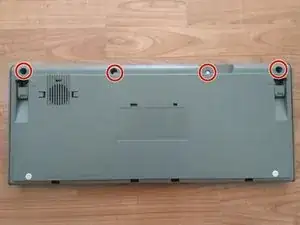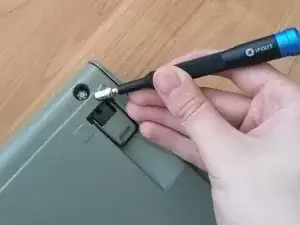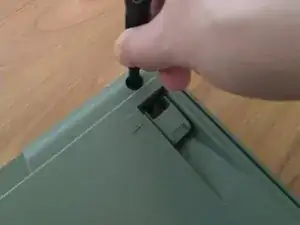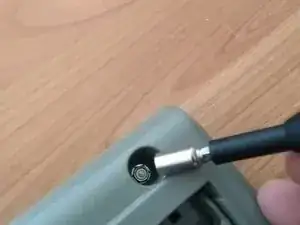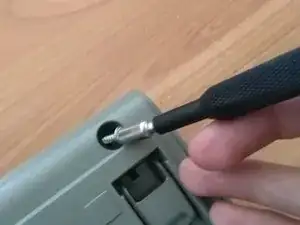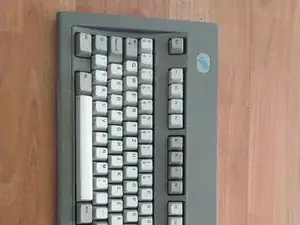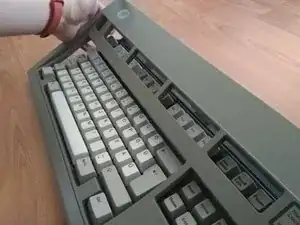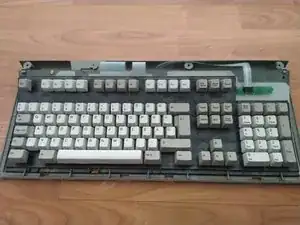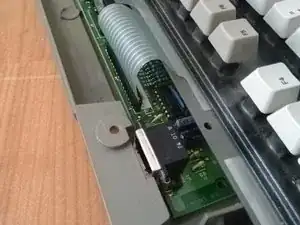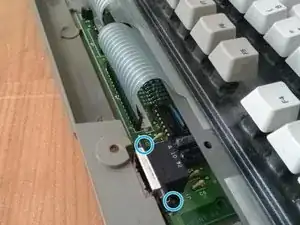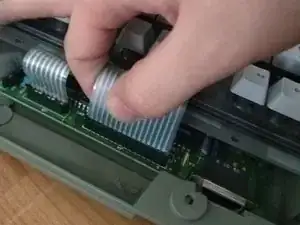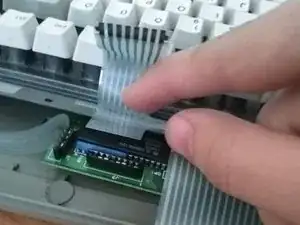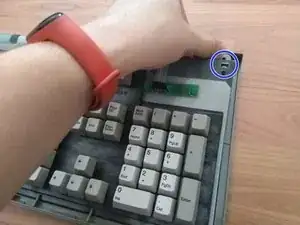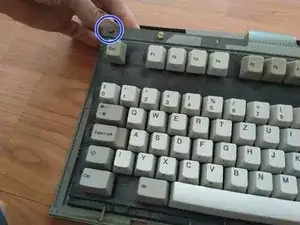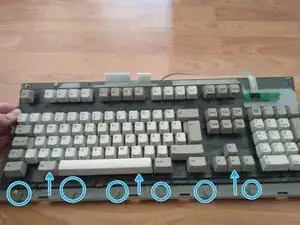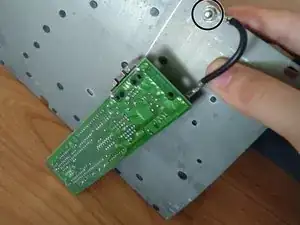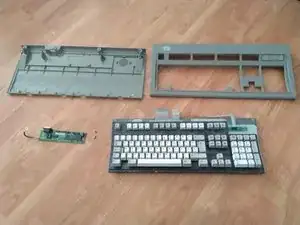Einleitung
Werkzeuge
-
-
The IBM Model M is one of the best keyboards ever made.
-
Athrogh they're pretty durable, they may need some repair jobs done over time, especially cleaning.
-
-
-
If your keyboard has a detachable SDL cable, it is a good idea to remove it now.
-
Press the two plastic tabs together with your fingers.
-
You should be able to pull the connector out. They maybe sometimes a little bit tight.
-
-
-
On the bottom of your keyboard, there are 4 screw holes as marked on the image.
-
You will need a 5.5 mm nut driver to remove these screws. This kind of driver can be found in the iFixit Mako Screwdriver kit, which is part of every Pro Tech Toolkit.
-
Turn the screws counter-clockwise to loosen them.
-
-
-
After loosening the screws, it is a good idea to use a magnet to pick them up.
-
I've used the Mako screwdriver kit's magnetic bit to pick the screws up.
-
Put the screws away in a container, where you can safely store them.
-
-
-
Holding together the bottom and the top of the keyboard, turn it around, so the keys are facing upwards.
-
Lift up the top housing of the keyboard. Raise the part above the F keys.
-
You can easily remove the top housing now.
-
-
-
The case is disassembled now. But we need to remove some flex cables, in order to remove the keyboard assembly safely.
-
The small PCB is located on the top left side, where we'll work now.
-
The PCB is held in place by two small plastic poles, on the left and the right side of the SDL connector, illustrated on the photos.
-
-
-
Grab the flex cables gently, and pull them upwards. We need to remove 3 flex cables in total.
-
-
-
After we removed the flex cables, we can safely remove the keyboard assembly from the case.
-
Lift up the top of the metal plate. Look out for the plastic stands.
-
Slide the metal plate upwards, so none of the plastic holders clamp the plate down anymore. (Look for the circles on the image.) The assembly should be free to remove now.
-
-
-
To remove the PCB, you just have to undo this screw. It is a flathead screw, secured by a 6 mm nut on my keyboard. It may be slightly different between models, but don't expect anything exotic here. It was handthight on mine, so I didn't even needed any tools to loosen this.
-
Your keyboard is now fully disassembled.
-
2 Kommentare
On my model M a key stopped buckling; it just feels soft. Do you know how to fix that?
Mark -
You can see, that on the back on the metal plate, there are dozens of these little pastic circles. These circles are actually melted plastic rivets, that are designed to keep together the barrel plate, membrane, metal backplate sandwitch. The buckling springs and their hammers rest in the barrel plate.
Over time, those melted plastic rivets are starting to snap off, due to the aging plastic becomes brittle. It’s not a big deal in the beginning, but eventually, if some areas has no rivets remaining, keys will start to feel off, not buckle, etc.
Your only way to restore the keyboard’s original state is to do a so called “bolt-mod”. You need to drill out all those little plastic rivets, and replace them by tiny screws. There are actually lots of great articles on the internet how to do it, check them out.
I have a Model M that may need this same treatment in the future, so maybe I will make a guide on Ifixit.
